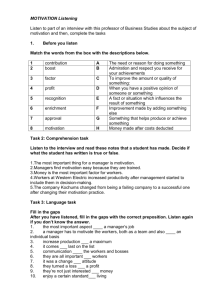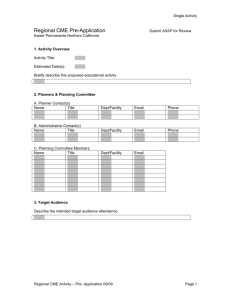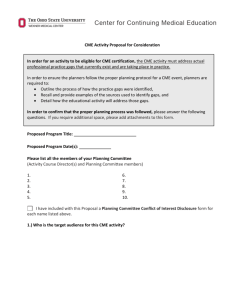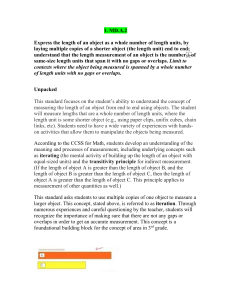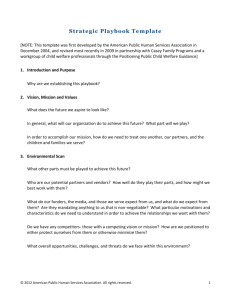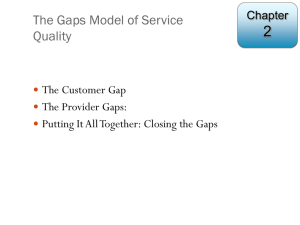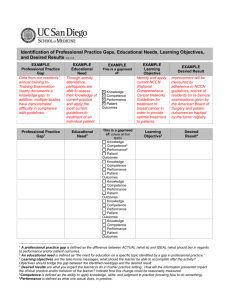Planning Tool 1 – Explanation and Examples of Gaps, Needs
advertisement
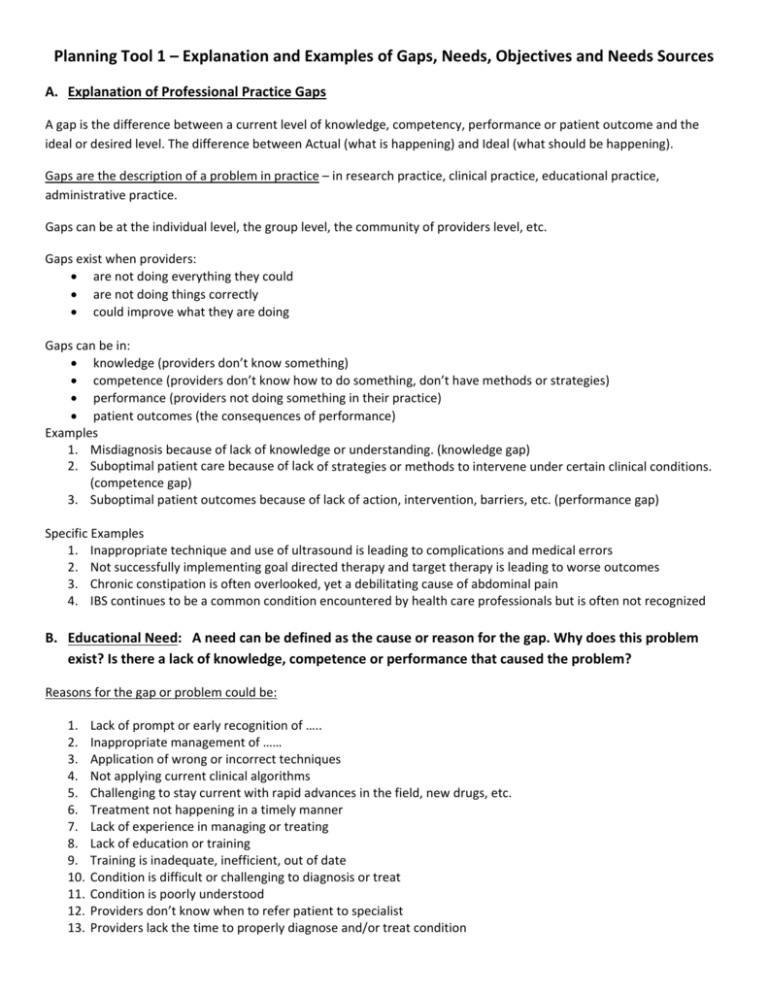
Planning Tool 1 – Explanation and Examples of Gaps, Needs, Objectives and Needs Sources A. Explanation of Professional Practice Gaps A gap is the difference between a current level of knowledge, competency, performance or patient outcome and the ideal or desired level. The difference between Actual (what is happening) and Ideal (what should be happening). Gaps are the description of a problem in practice – in research practice, clinical practice, educational practice, administrative practice. Gaps can be at the individual level, the group level, the community of providers level, etc. Gaps exist when providers: are not doing everything they could are not doing things correctly could improve what they are doing Gaps can be in: knowledge (providers don’t know something) competence (providers don’t know how to do something, don’t have methods or strategies) performance (providers not doing something in their practice) patient outcomes (the consequences of performance) Examples 1. Misdiagnosis because of lack of knowledge or understanding. (knowledge gap) 2. Suboptimal patient care because of lack of strategies or methods to intervene under certain clinical conditions. (competence gap) 3. Suboptimal patient outcomes because of lack of action, intervention, barriers, etc. (performance gap) Specific Examples 1. Inappropriate technique and use of ultrasound is leading to complications and medical errors 2. Not successfully implementing goal directed therapy and target therapy is leading to worse outcomes 3. Chronic constipation is often overlooked, yet a debilitating cause of abdominal pain 4. IBS continues to be a common condition encountered by health care professionals but is often not recognized B. Educational Need: A need can be defined as the cause or reason for the gap. Why does this problem exist? Is there a lack of knowledge, competence or performance that caused the problem? Reasons for the gap or problem could be: 1. Lack of prompt or early recognition of ….. 2. Inappropriate management of …… 3. Application of wrong or incorrect techniques 4. Not applying current clinical algorithms 5. Challenging to stay current with rapid advances in the field, new drugs, etc. 6. Treatment not happening in a timely manner 7. Lack of experience in managing or treating 8. Lack of education or training 9. Training is inadequate, inefficient, out of date 10. Condition is difficult or challenging to diagnosis or treat 11. Condition is poorly understood 12. Providers don’t know when to refer patient to specialist 13. Providers lack the time to properly diagnose and/or treat condition 14. Providers don’t get appropriate patient history 15. Patient not in compliance with treatment or does not adhere to treatment protocol C. Objectives: The objectives are the solution to address the need and help close the gap. Objectives show what changes are anticipated (in knowledge, competence, performance or patient outcomes) as a result of the CME activity. D. Needs Assessment Sources: How do you know that the gaps and needs exist? What evidence do you have? Methods to identify gaps, needs, etc. Examples from CME Providers Ask yourself: “What patient problems or professional challenges is the target audience unable to meet?” and “Why are they unable to address the patient problems or challenges articulated above?” and “What evidence, data, or sources were consulted in the identification of the professional practice gaps?” Professional practice gaps are identified by the course director(s) and planning committees who use: surveys of patients and physicians, data from peer‐reviewed publications direct interactions with physicians the introduction of new techniques or procedures Educational needs of learners that underlie the professional gaps are identified through prior course surveys expert opinion, and recent data from public health sources reported morbidity/mortality gaps, and evidence of misdiagnosis or mistreatment. Practice gaps and needs are identified through staff and management discussions: data from other organizations with similar membership and audience member opinion surveys online member forums, activity evaluations and pre‐ and post‐test scores input from consultants and topic experts from government regulations with which physicians must comply Gaps are identified through: physician self‐observation observed performance in the patient care setting referral patterns quality data generated from the institution's affiliated hospitals national performance measures.
